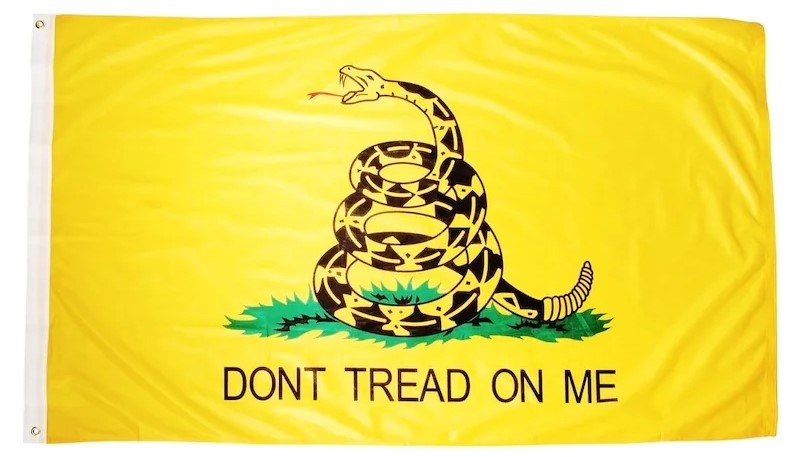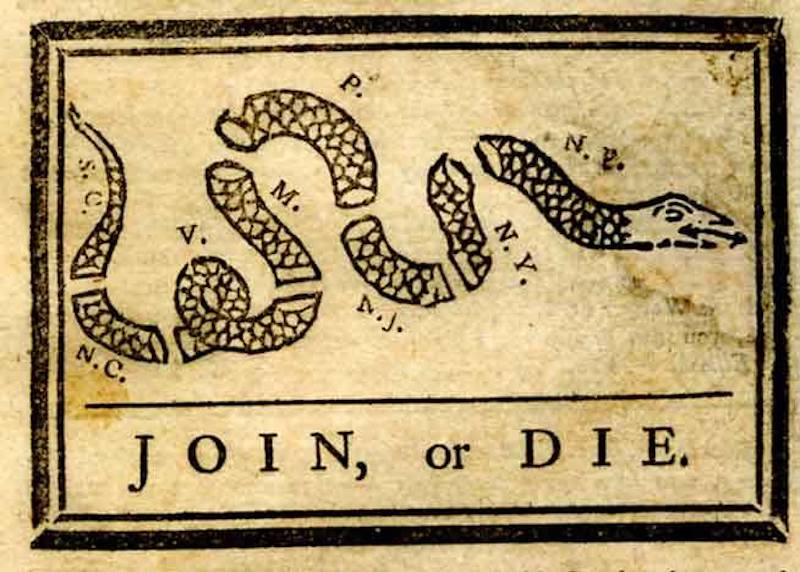Whether you call it a Hopkins flag, Gadsden flag, or the ‘Don’t tread on me’ flag; it’s all one and the same. Meanwhile, the Gadsden flag has even more interpretations — especially in today’s age. It appears on on stickers, shirts, morale patches, pins, bumper stickers, and even license plates. With the good comes the bad, as many have expressed negative connotations associated with the flag. The history, as we’ll see, doesn’t match some’s assumptions.

Colonial Origins
The Gadsden flag was born during the Revolutionary War. Its creator, Christopher Gadsden, was incredibly involved politically. Gadsden was a member of the South Carolina Sons of Liberty, a group that fought against British rule and their Stamp Act. He was also a part of the first two Continental Congresses. His longest-lasting impact, however, would appear to be the Gadsden flag.
Gadsden created the flag for the Continental Navy. He carefully thought out each feature during its creation. The flag was initially flown on Esek Hopkin’s ship, the USS Alfred. This is where the Gadsden flag developed the alternative moniker as a “Hopkins” flag. The yellow background was chosen because the color was commonly connected to the Navy. During the early part of the war, Continental Marines also flew the flag. The rattlesnake has important iconography and the adjoining phrase conveyed more than it seems.
The Rattlesnake

“In some of the uninhabited parts of these provinces there are numbers of these venomous reptiles we call rattle-snakes: felons-convict from the beginning of the world. …In the spring of the year, when they first creep out of their holes, they are feeble, heavy, slow and easily taken; and if a small bounty were allowed per head, some thousands might be collected annually and transported to Britain. There I would propose to have them carefully distributed in St. James Park, in the Spring Gardens and other places of pleasure about London; in the gardens of all the nobility and gentry throughout the nation; but particularly in the gardens of the prime ministers, the lords of trade, and members of Parliament[.]…Rattlesnakes seem the most suitable returns for the human serpents sent us by our Mother Country.”
With inspiration from Franklin, Gadsden chose the rattlesnake as it was uniquely native to America, not unlike the American Bald Eagle. Rattlesnakes normally only attack in self-defense, which contrasted against the British aggression. The snake, drawn coiled and ready to strike, modeled the Colonies.
The rattlesnake has become a long-standing symbol in America and is present in many other places such as the seal for the Department of the Army. The rattlesnake has strong symbolism because of the strength, courage, and defensiveness it represents — as well as its uniqueness to the United States.
“Don’t tread on me”
In the 1800s, the meaning came from a long and drawn-out rage of the time. The meaning was ultimately whittled down and became sweet and to the point. The chosen phrase originally focused on gaining individual rights and liberty during the American Revolution. Between the imagery, eye-catching yellow, and universally understandable phrase; the flag did its job well.
Modern interpretations and uses

The Gadsden flag remains a symbol for liberty and individual rights to this day, but other groups have adopted it. Our military has carried it into enemy territory and worn it on morale patches. It’s been used to rally for rights in many contexts, such as educational and First Amendment rights. The Gadsden flag is commonly used in advocating for Second Amendment rights.
In 2009, a group of Republicans demanding major fiscal change, such as lowering taxes, started the Tea Party movement. Overall, the movement demanded smaller government. While a reference to the Boston Tea Party of 1773, the “Tea” in “Tea Party” was also an acronym for “taxed enough already”. Soon enough, Tea Party supporters adopted the Gadsden flag at rallies for the movement. These events caused a 21st Century resurgence of the Gadsden flag not seen since the 70s.


Misinterpretation of the Gadsden Flag
There’s always a bad egg that can ruin a good thing for everyone. There have been accusations the flag represents racist ideals with ties back to slavery. However, at least in most circles, there is no connection to racism. Looking at the history of the flag, it originated from the Revolutionary War when the Colonies sought independence from the British. The Gadsden flag’s history and origin represented the Colony’s hopes for individual rights and smaller government.
Final Thoughts on the Gadsden Flag
Regardless of what you call it or what you correlate it to, the true origin and history of the Gadsden flag is in the Revolutionary War. The flag symbolized individual rights and liberty to separate from the British while warning them not to do something they may regret. The Gadsden flag traveled extensively: from the Continental Navy’s flag to Libertarians of the 70s to the Second Amendment movement of the 21st Century. Over time, the Gadsden flag maintained the same ideals and, hopefully, will continue to do so for years to come.


